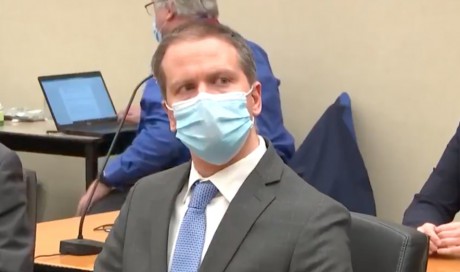When he left the United States at the end of 2015, Otto Warmbier was a healthy, athletic 21-year-old.
When he returned last week, medically evacuated from his 17-month detention in North Korea, he was in a coma, with extensive brain damage.
On Monday he died, surrounded by family. His funeral will be held Thursday at the high school where he graduated as salutatorian in 2013.
His death - the loss of a buoyant, hard-working, adventurous University of Virginia student - touched off mourning, outrage, and many questions. What had happened to him? And could he have been saved?
President Donald Trump said Tuesday: "It's a disgrace what happened to Otto. . . . And frankly, if he were brought home sooner, I think the results would have been a lot different. He should have been brought home that same day. The results would have been a lot different. "
Several neurologists agreed there is no way to know for certain what caused the coma - it could have been anything from an allergic reaction to a drug overdose to strangulation or some other kind of torture.
And they agreed that if that trigger could have been avoided, minimized, or treated properly at the time, or if he could have been evacuated to the U.S. immediately after it happened, the outcome might have been very different.
Once days or weeks had passed, though, if the injury was severe, it is likely that the damage was done.
Last week, doctors at the University of Cincinnati Medical Center said after examining Warmbier that they had found no obvious signs of trauma, such as fractures, and that the pattern of brain injury on magnetic resonance imaging (MRI) results appeared consistent with a cardiopulmonary arrest. They said they are not aware of anything from Warmbier's previous medical history, prior to his time in North Korea, that might cause cardiopulmonary arrest.
Warmbier traveled with a tour group to North Korea on his way to a study abroad program in Hong Kong, but was not allowed to leave the country. After a sham trial in 2016, he was sentenced to 15 years of hard labor. Shortly after that, apparently, he was injured. He was denied consular visits and his family had no word of him after March 2016 until they were told earlier this month that he had been in a coma for over a year. He was medically evacuated and arrived home in Cincinnati for treatment last week.
Based on what the doctors in Cincinnati have said publicly, S. Andrew Josephson, director of inpatient neurology at the University of California at San Francisco, said it seemed pretty clear that "either the brain for a period of time was not getting enough blood flow, or enough oxygen, or both. But how does that happen? . . . Given how young he is, it seems unlikely that this would happen spontaneously."
"This is not a typical injury for someone that age unless there were some sort of trauma or extenuating circumstances," said Paul Nyquist, co-director of Johns Hopkins Bayview Neurocritical Care Unit. "It seems unlikely that would happen without some form of intervention, torture of some sort."
North Korean officials said Warmbier had contracted botulism, taken a sleeping pill, and fallen into a coma - an explanation his parents rejected.
The University of Cincinnati doctors didn't find any evidence of botulism, but several neurologists said that doesn't rule it out. They said it might not be possible to detect any sign of it after so many months.
If there had been botulism and he were diagnosed and treated appropriately, there would not have been brain injury, said Daniel Laskowitz, a professor of neurology at Duke University.
Based on what the Cincinnati doctors said publicly, Laskowitz said Warmbier was not brain dead when he returned; he could breathe on his own, despite the devastating injury. But after more than a year, he said, the chance that a patient with such an injury will regain any meaningful activity is "diminishingly small."
Last week Warmbier was in stable condition and had no signs of infection or dysfunction of other major organs.
It doesn't seem unusual that Warmbier died soon after his return, Nyquist said.
There could be several possible causes in such cases; sometimes an infection such as sepsis will develop which becomes fatal; sometimes a family will make a difficult choice not to continue aggressive treatment; sometimes blood clots develop in people who are immobile, which can be deadly if they move to the lungs.
So what happened to Otto Warmbier?
"It's almost a moot point," Laskowitz said. "Whatever they did to him - they took a healthy kid, put him under horrible conditions, mental and physical anguish. . . . they left him at risk, didn't treat him properly, didn't tell anyone -
"Whatever the proximal cause was, is not even that relevant."
Many national leaders seemed to agree. Sen. John McCain, R-Ariz., called it murder. Sen. Ben Cardin, D-Md., said, "Otto is dead because of Kim Jong-un's repressive, murderous regime."
Todd Siler, who taught Warmbier in high school, said his youngest daughter, a sixth-grader, watched the doctors talking last week about Warmbier, who had been her swimming coach. The two of them were close; Warmbier loved that every time she surfaced through the water, she had a big, spontaneous smile on her face, Siler said, and used to tease her, warmly, about that.
She came back downstairs after going to bed that night to ask Siler a question: "Can fear cause a heart attack?"
He told her, "'You know honey, we're never going to know. There are questions that we will never be able to answer.'
"Maybe we get to invent a narrative there," he said later. "I like to think of Otto as so strong that they couldn't break him. They had to do things to him because they were angry.
"You've got to look for some way of finding comfort, I suppose."
Share This Post














